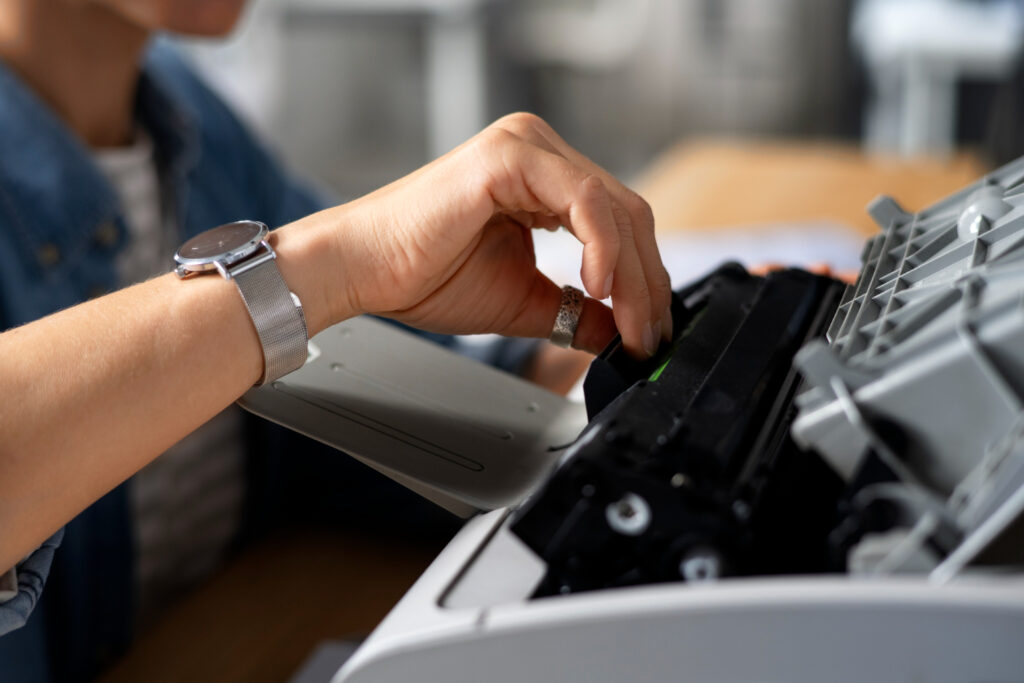Introduction
Is your printer keeps disconnecting in the middle of important print jobs? Few technical issues are as frustrating as a printer that repeatedly loses connection, especially when you’re racing against deadlines. Whether you’re working from home or managing an office, an unreliable printer connection can seriously impact productivity. The good news is that most printer disconnection problems have straightforward solutions that don’t require advanced technical skills. In this comprehensive guide, we’ll explore why printers lose connection and provide practical, step-by-step fixes to resolve these annoying interruptions once and for all.
What Is Printer Disconnection?
Printer disconnection occurs when the communication link between your computer and printer is unexpectedly severed. This issue manifests in various ways: your printer might disappear from the available devices list, print jobs may remain stuck in the queue, or you might receive error messages indicating the printer is offline or unavailable.
These disconnections can happen with both wired (USB) and wireless printers, though wireless models tend to experience connectivity issues more frequently due to additional variables like signal strength and network stability. Printer disconnection problems typically stem from one of four root causes: network instability, outdated software/drivers, hardware issues, or printer configuration errors.
Understanding what’s causing your printer to keep disconnecting is the first step toward implementing an effective solution. Different causes require different approaches, and diagnosing the problem correctly will save you time and frustration.
12 Ways to Fix a Printer That Keeps Disconnecting

Network-Related Solutions
1. Check Your Wi-Fi Signal Strength
If your printer keeps disconnecting from the wireless network, weak signal strength might be the culprit.
How to fix it:
- Position your printer closer to the Wi-Fi router
- Remove physical barriers between the printer and router
- Consider using a Wi-Fi extender if the distance is significant
- Check if other devices are also experiencing connection issues on the same network
A strong, stable connection requires at least 50% signal strength for reliable printing. If your printer displays signal strength, ensure it shows good reception.
2. Restart Your Network Equipment
Network glitches often cause printers to disconnect unexpectedly. A simple restart can resolve many temporary network issues.
How to fix it:
- Turn off your printer completely
- Unplug your router and modem
- Wait at least 30 seconds
- Plug in your modem and wait for it to fully reconnect
- Plug in your router and wait for it to boot completely
- Turn your printer back on
- Reconnect your printer to the network
This process resets all network connections and often resolves communication problems between devices.
3. Check for Network Congestion
Too many connected devices can overwhelm your network, causing intermittent printer disconnections.
How to fix it:
- Disconnect unused devices from your network
- Consider setting up a dedicated network for your printer
- Schedule large print jobs during times of lower network usage
- Upgrade your router if you regularly have many connected devices
Software and Driver Solutions
4. Update Your Printer Drivers
Outdated or corrupt printer drivers commonly cause disconnection issues. Updated drivers ensure compatibility with your operating system.
How to fix it:
- Visit your printer manufacturer’s website
- Navigate to the support/downloads section
- Enter your printer model
- Download the latest drivers for your operating system
- Uninstall the current drivers before installing the new ones
- Restart your computer after installation
Manufacturers regularly release driver updates to fix known issues, including connection problems.
5. Clear the Print Queue
Stuck or corrupted print jobs can prevent proper printer communication.
How to fix it:
- Open the Services application (on Windows, press Win+R, type “services.msc”)
- Find and stop the Print Spooler service
- Navigate to C:\Windows\System32\spool\PRINTERS
- Delete all files in this folder
- Restart the Print Spooler service
- Try printing again
This process clears any stuck print jobs that might be interfering with the connection.
6. Check for Operating System Updates
Outdated operating systems may contain bugs affecting printer connectivity.
How to fix it:
- On Windows: Go to Settings > Update & Security > Windows Update
- On Mac: Go to System Preferences > Software Update
- Install all available updates
- Restart your computer after updating

Hardware-Related Solutions
7. Inspect Physical Connections
For USB-connected printers, cable issues often cause disconnections.
How to fix it:
- Check the USB cable for visible damage
- Try a different USB port on your computer
- Replace the USB cable with a new, high-quality one
- Ensure the cable is properly seated at both ends
- Keep cable length under 10 feet to prevent signal degradation
Sometimes the simplest solution is the most effective—many connection problems stem from loose or damaged cables.
8. Power Cycle Your Printer
Internal printer errors can be resolved with a complete power cycle.
How to fix it:
- Turn off your printer
- Unplug it from the power source
- Wait at least 60 seconds
- Plug it back in
- Turn the printer on
- Wait for it to complete its startup sequence
This process clears the printer’s internal memory and resets its connection systems.
Printer Configuration Solutions
9. Assign a Static IP Address
Dynamic IP assignment can cause wireless printers to disconnect when addresses change.
How to fix it:
- Access your printer’s network settings menu
- Look for IP configuration or TCP/IP settings
- Change from “Dynamic” or “DHCP” to “Static” or “Manual”
- Enter an IP address outside your router’s DHCP range
- Enter the correct subnet mask and gateway
- Save changes and restart your printer
A static IP ensures your printer always has the same network address, preventing disconnections during DHCP lease renewals.
10. Reset Printer Network Settings
Sometimes accumulated network configuration errors require a complete reset.
How to fix it:
- Access your printer’s control panel
- Navigate to network settings or setup
- Look for “Reset Network” or similar option
- Confirm the reset when prompted
- Reconfigure your network connection from scratch
While more time-consuming, this often resolves persistent connection issues by eliminating problematic saved settings.
11. Update Printer Firmware
Outdated firmware can cause various issues, including connectivity problems.
How to fix it:
- Check your printer manufacturer’s website for firmware updates
- Download the appropriate version for your model
- Follow the manufacturer’s instructions for installation
- Ensure the printer remains powered during the update
- Restart your printer after the update completes
Firmware updates often include connectivity improvements and bug fixes for known issues.
12. Disable Sleep Mode
Some printers disconnect when entering deep sleep states.
How to fix it:
- Access your printer’s settings menu
- Look for power settings or power management
- Increase the sleep timer or disable sleep mode completely
- Save your settings
While this may increase power consumption slightly, it can prevent disconnections caused by the printer entering a low-power state.

Additional Tools and Insights
Several manufacturer-provided tools can help diagnose and fix printer connection issues:
- HP Print and Scan Doctor: Automatically fixes common connection issues with HP printers
- Epson Connection Checker: Specifically designed to identify network connectivity problems
- Canon Print Assist: Guides users through connection troubleshooting steps
- Brother Diagnostic Tool: Checks printer status and connection quality
Third-party network diagnostic tools can also help identify broader network issues affecting your printer:
- Wireless Network Watcher: Shows all devices on your network and their connection status
- Wireshark: Advanced tool for analyzing network traffic between your computer and printer
- Ping Tests: Simple command-line tool to check connectivity (type “ping [printer IP]” in Command Prompt)
Understanding your printer’s connection logs can provide valuable insights. Most modern printers store connection history that can be accessed through their web interface or control panel, helping identify patterns in disconnection times.
Common Mistakes to Avoid When Troubleshooting Printer Disconnections
1. Ignoring Router Placement
Many users overlook the importance of router positioning. Wireless printers need good signal strength to maintain connection:
- Avoid placing routers near metal objects, microwaves, or cordless phones
- Elevate routers for better signal distribution
- Keep routers centrally located rather than at one end of your home or office
2. Missing Printer-Specific Connection Requirements
Different printer brands have specific connection requirements:
- Some HP printers require both the computer and printer to be on the same network band (2.4GHz vs. 5GHz)
- Epson printers often need WPA2-Personal security (not Enterprise) for stable connections
- Brother printers may require specific firewall exceptions
- Canon printers sometimes need multicast DNS enabled
Check your printer’s manual for brand-specific connection requirements.
3. Rushing Network Setup
Hasty network configuration often leads to persistent connection issues:
- Always wait for each setup step to complete before proceeding
- Follow manufacturer instructions exactly, especially regarding connection order
- Document network settings for easier troubleshooting later
- Use the printer’s LCD panel (if available) to confirm connection status
4. Ignoring Windows Printer Troubleshooter
Windows includes a built-in printer troubleshooter that can automatically fix many common issues:
- Go to Settings > Update & Security > Troubleshoot
- Select “Printer” and run the troubleshooter
- Follow the on-screen instructions
This automated tool can identify and fix problems that aren’t immediately obvious.
Frequently Asked Questions
Why does my printer disconnect when I’m not using it?
Most printers enter a power-saving sleep mode when idle. In some cases, this deep sleep disconnects the printer from the network. You can either extend the sleep timer or disable sleep mode entirely in your printer’s settings menu.
Can antivirus software cause my printer to disconnect?
Yes, particularly aggressive firewall settings in antivirus programs can block printer communication. Try temporarily disabling your firewall or antivirus to see if this resolves the issue. If it does, add an exception for your printer in your security software.
Why does my printer stay connected to my phone but not my computer?
Mobile devices often use different connection methods (like Wi-Fi Direct or Bluetooth) that bypass your home network. If your printer connects reliably to mobile devices but not computers, the issue likely involves your network settings rather than the printer itself.
How can I tell if my printer disconnection is hardware or software related?
If your printer disconnects from all devices (computers, phones, tablets), it’s likely a hardware or network issue. If it only disconnects from specific devices, it’s probably a software issue on those devices.
Conclusion
When your printer keeps disconnecting, the solution often lies in methodical troubleshooting rather than replacing equipment. By systematically addressing network stability, updating software and drivers, checking hardware connections, and optimizing printer settings, you can resolve most connection issues permanently. The most successful approach combines preventative measures (like firmware updates and static IP assignment) with responsive fixes when problems occur.
Remember that printer technology continues to evolve, with manufacturers regularly releasing updates to improve reliability. Keeping your entire printing ecosystem—from drivers to firmware to network equipment—updated is the best long-term strategy for preventing future disconnection problems. With the fixes outlined in this guide, you should enjoy much more reliable printing and fewer frustrating interruptions to your workflow.
Printer Won’t Turn On? 8 Easy Fixes to Get It Working Again Read More.





Recent Comments